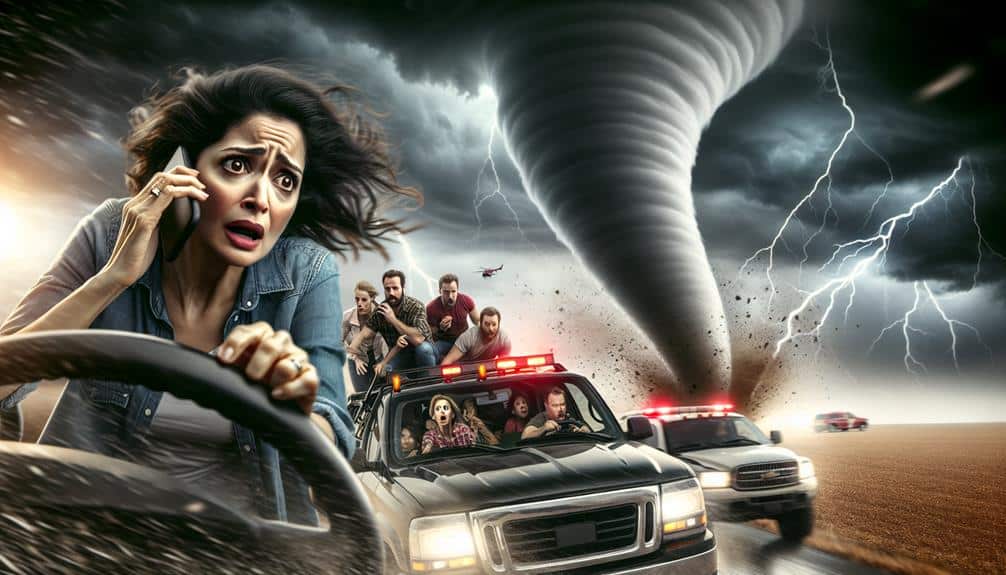In the aftermath of a storm, it's important we report damage accurately and efficiently to make sure a quick and effective response. Let's assess the damage thoroughly by conducting a detailed walk-through and taking timestamped photos. We should use clear, concise language and avoid technical jargon. Providing exact locations with GPS coordinates will help responders greatly. Including high-quality visual evidence, like before and after photos, will offer more context. Finally, we'll follow up with regular updates to document changes and new damage. By covering these essential tips, we'll be prepared to handle storm aftermath effectively while making sure that our efforts have a meaningful impact.
Key Points
- Conduct a detailed walk-through of the affected areas and document findings with timestamped photos and videos.
- Use clear and concise language to describe the damage, avoiding technical jargon.
- Specify the exact locations of damage using GPS coordinates, street names, and landmarks.
- Include high-quality visual evidence with detailed explanations, using before and after photos for comparisons.
Assess the Damage Thoroughly
Before we report any storm damage, we need to assess the damage thoroughly to guarantee nothing is overlooked.
First, let's start by conducting a detailed walk-through of the affected areas. This means inspecting every corner, from the roof to the foundation, to identify any visible and hidden damage.
Documenting the damage is essential. We should take clear, timestamped photographs and videos from multiple angles to create a comprehensive record. This damage documentation will serve as solid evidence when filing an insurance claim or seeking professional repairs.
Next, we should consider a professional assessment. Engaging licensed inspectors or contractors can help us identify issues that mightn't be immediately apparent. Professionals bring a trained eye to the process, ensuring nothing crucial is missed.
They can provide a detailed report, which will be invaluable for our records and future reference.
Use Clear and Concise Language
When reporting storm damage, we must use clear and concise language to guarantee our message is understood without ambiguity. To achieve this, we should focus on being specific about the damage observed. Descriptions like 'a large tree branch fell on the roof' are more helpful than vague statements such as 'there's some damage to the roof.' Specificity helps responders understand the severity and nature of the problem quickly.
We should also aim to avoid jargon. Technical terms might confuse someone who isn't familiar with them, which can lead to misunderstandings and delays in response. Instead of saying 'the fascia board is compromised,' a clearer statement would be 'the wooden board under the edge of the roof is broken.'
Emphasizing clarity is essential. Sentences should be straightforward and free from unnecessary words. For example, 'The garage door is broken and won't close' is more effective than 'The garage door appears to have sustained damage and is currently not functioning properly.'
Using concise language helps us communicate efficiently. Long-winded explanations can obscure important details and slow down the response process. By following these guidelines, we guarantee that our storm damage reports are both clear and effective.
Provide Exact Locations
We must specify the exact locations of the damage to guarantee responders can quickly and accurately assess and address the issues. Accurate location information helps emergency services prioritize their efforts and reduces response times. We can achieve this by using GPS coordinates, which provide precise latitude and longitude details. This level of location accuracy is invaluable, especially in areas where traditional addresses might be unclear or nonexistent.
In addition to GPS coordinates, we should include street names and property boundaries to further clarify the location. Street names help responders navigate to the correct area, while property boundaries ensure they know the specific extent of the affected area.
When describing the damage, mentioning landmarks or nearby intersections can also be beneficial. For instance, instead of saying 'a tree fell on my house,' we should specify 'a tree fell on my house at the corner of Elm Street and Maple Avenue.'
Include Visual Evidence
Including visual proof strengthens our reports by providing clear, undeniable evidence of the damage, guaranteeing responders grasp the seriousness and specifics of each situation. We should always aim to capture high-quality photo documentation that showcases the extent of the storm's impact. Detailed explanations accompanying these photos can highlight key details that mightn't be immediately obvious, such as the size of fallen debris or the depth of flooding.
Before and after photos are particularly effective in illustrating the extent of the damage. By showing the same location prior to and following the storm, we give a clear comparison that emphasizes the changes. This method helps to contextualize the damage, making it easier for those evaluating the report to see the full scope.
Additionally, video evidence can provide a dynamic perspective that still images might overlook. Videos can capture the movement and spread of damage, such as water flow paths or the swaying of structurally compromised buildings.
When recording video, we should narrate what we see, adding contextual details to strengthen our visual evidence. This combination of photo documentation, detailed explanations, and video evidence ensures our reports are thorough and compelling, aiding in a swift and effective response.
Follow up With Updates

Regular updates are vital to keeping responders informed about ongoing conditions and any new developments. By consistently tracking progress, we guarantee that everyone involved has the latest information, which is critical for effective decision-making and resource allocation. When we provide updates, it helps responders plan their actions more efficiently and address any emerging issues promptly.
To track progress accurately, we should document changes and new damage as soon as they occur. This includes noting shifts in weather conditions, additional structural damage, or new hazards. Regular updates can also help identify patterns or trends that may influence the response strategy. Keeping a detailed log of these changes allows us to offer precise information, minimizing confusion and misunderstandings.
Furthermore, it's important to seek clarification when necessary. If we encounter ambiguous situations or conflicting reports, reaching out to the appropriate authorities or experts can provide the needed clarity. This proactive approach guarantees that our updates remain reliable and actionable.
Frequently Asked Questions
How Soon Should I Report Storm Damage to My Insurance Company?
We should report storm damage to our insurance company as soon as possible. Timely reporting guarantees a smoother claim timeline and maximizes our insurance coverage, allowing us to quickly regain our freedom and secure necessary repairs.
What Information Should I Gather Before Contacting My Insurance Agent?
Before contacting our insurance agent, we should gather a detailed damage assessment, take photos, list affected items, and review our insurance coverage. This guarantees we provide accurate information and expedite the claims process efficiently.
Can I Make Temporary Repairs Before the Insurance Adjuster Arrives?
Yes, we can make temporary solutions before the adjuster arrives, but let's get insurance approval first. Keep all repair costs documented for the reimbursement process. This guarantees we're covered and speeds up the insurance claim.
How Do I Document Damage if I Don't Have a Camera?
Let's paint a picture with words. If we don't have a camera, we can create a detailed sketch of the damage and accompany it with a written description. This method guarantees we capture all necessary details accurately.
What Should I Do if I Can't Reach My Insurance Company Immediately?
If we can't reach our insurance company immediately, we should first seek emergency assistance. Then, we can try contacting alternative contacts within the company. Documenting everything meticulously guarantees we have all necessary information ready.


